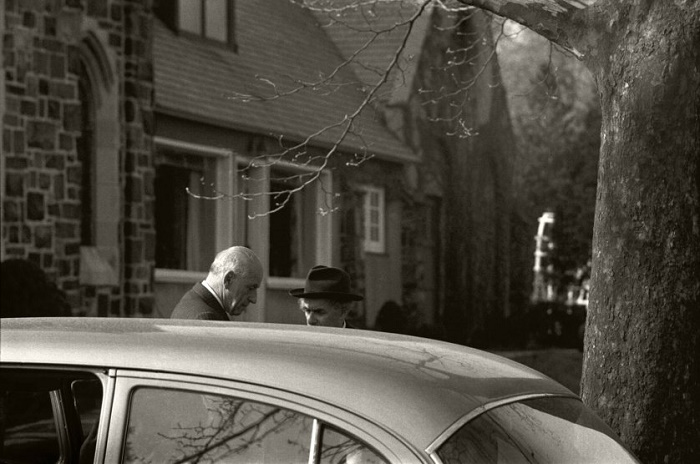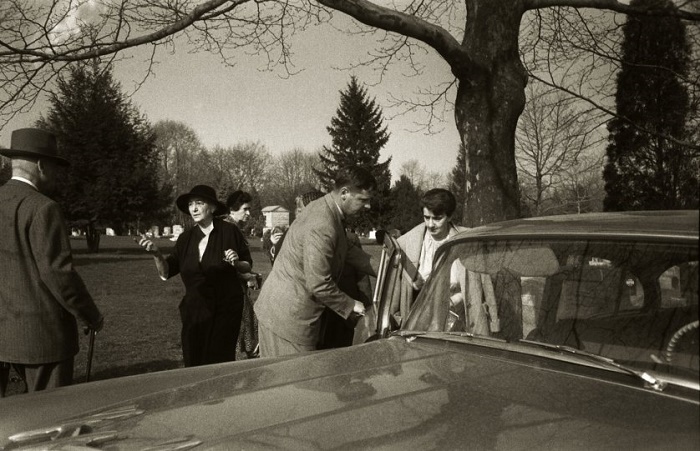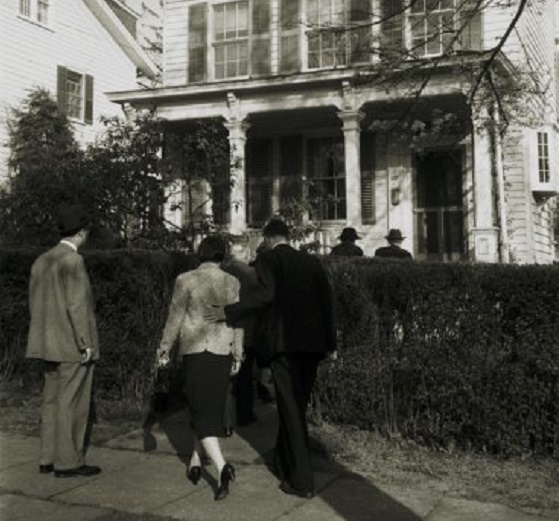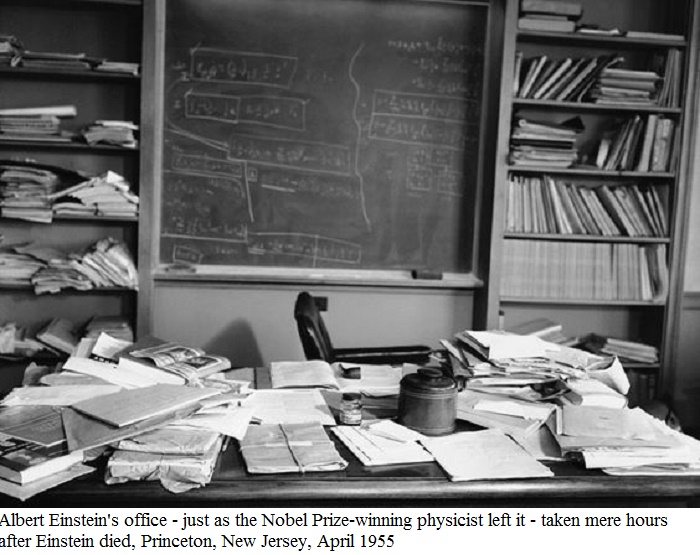Armed with his camera and a case of scotch — to open doors and loosen tongues — Morse compiled a quietly intense record of a 20th-century icon’s passing. But aside from one now-famous image — of Einstein’s office, exactly as he left it, taken hours after his death — the pictures Morse took that day were never published. At the request of Einstein’s son, who asked that the family’s privacy be respected while they mourned, LIFE’s editors chose not to run the full story, and for more than five decades Morse’s photographs lay in the magazine’s archives, forgotten.
The story of how Morse got the pictures, meanwhile, provides a lesson in tenacity, and thinking on one’s feet.
After getting a call that April morning from a LIFE editor telling him Einstein had died, Morse grabbed his cameras and drove the 90 miles from his house in northern New Jersey to Princeton.
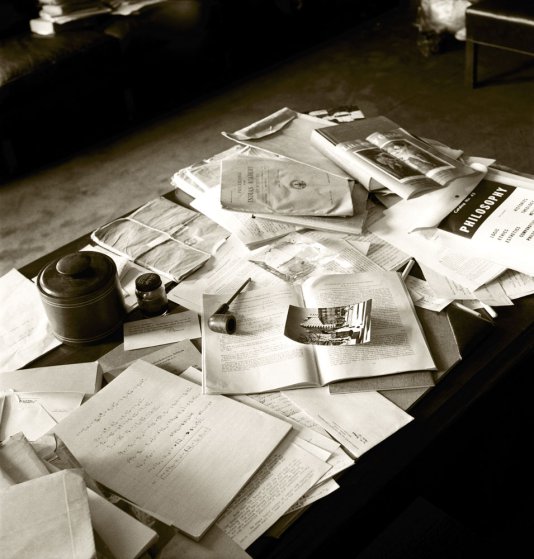
“Einstein died at the Princeton Hospital,” Morse, now 96 and living in Florida, told LIFE.com, “so I headed there first. But it was chaos — journalists, photographers, onlookers. So I headed over to Einstein’s office at the Institute for Advanced Studies. On the way, I stopped and bought a case of scotch. I knew people might be reluctant to talk, but most people are happy to accept a bottle of booze, instead of money, in exchange for their help. So I get to the building, find the superintendent, give him a fifth of scotch and like that, he opens up the office.”
Early in the afternoon, Einstein’s body was moved for a short time from the hospital to a funeral home in Princeton. The simple casket containing the corpse, post-autopsy, only stayed at the funeral home for an hour or so. Morse made his way there, and soon saw two men loading a casket into a hearse. For all Morse knew, Einstein’s burial was imminent. Hoping to scope out a spot near the grave, he quickly drove to the Princeton Cemetery.
“I drive out to the cemetery to try and find where Einstein is going to be buried,” Morse remembers. “But there must have been two dozen graves being dug that day! I see a group of guys digging a grave, offer them a bottle, ask them if they know anything. One of them says, ‘He’s being cremated in about twenty minutes. In Trenton!’ So I give them the rest of the scotch, hop in my car, and get to Trenton and the crematorium just before Einstein’s friends and family show up.”
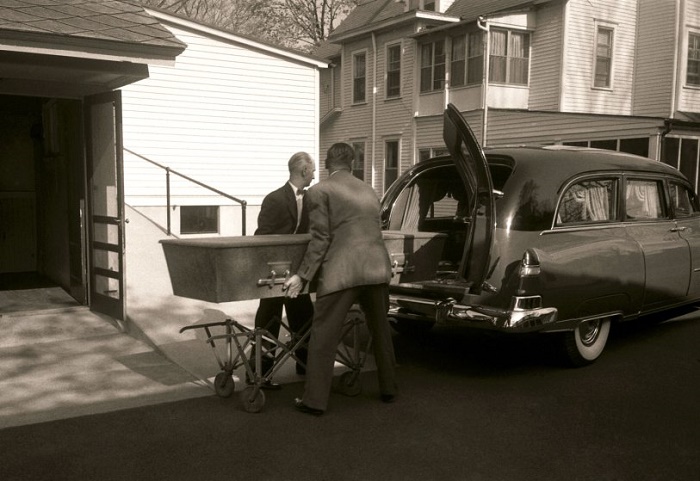
“I didn’t have to tell anyone where I was from,” Morse says of his time spent photographing the events of the day. “I was the only photographer there, and it was sort of a given that if there was one photographer on the scene, chances were good he was from LIFE.”
At one point early in the day, Einstein’s son Hans asked Morse for his name — a seemingly insignificant, friendly inquiry that would prove, within a few hours, to have significant ramifications.
“As the day was winding down, I was pretty excited,” Morse recalls, “because I knew I was the only fellow with these pictures. This was big news! Einstein was a huge public figure, world famous, and we had this story cold.” He headed to Manhattan, and the LIFE offices, certain he’d be feted for his colossal scoop.
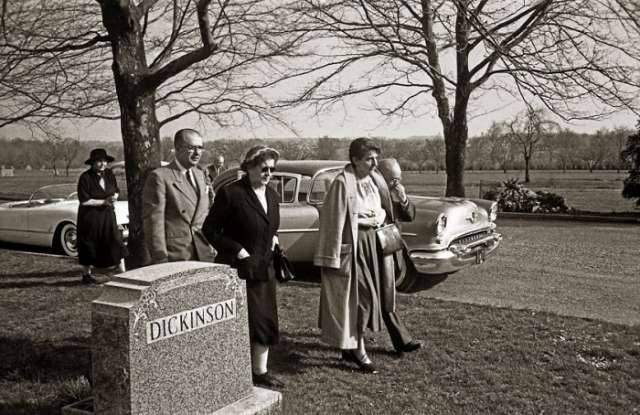
“I get to New York with the film, and there are signs all over the place in the office: ‘Ralph, see Ed!’ Ed Thompson was LIFE’s managing editor. A great journalist. Ed says, ‘Ralph, I hear you have one hell of an exclusive.’ I say, ‘Yeah, I think I do.’ And he says, ‘Well, we’re not going to run it.’ I was stunned. Turns out Einstein’s son, Hans, called while I was on the road to New York, and asked that we not run the story, that we respect the family’s privacy. So Ed decided to kill the story. You can’t run a magazine without an editor to make those decisions, and Ed had made his. So I thought, ‘Well, that’s that,’ and went on to my next assignment. I figured the pictures would never see the light of day, and forgot all about them.”
Here, 60 years later, LIFE presents a selection of photographs from that day — pictures that capture the scene on a spring morning in New Jersey, when Ralph Morse found himself racing around an Ivy League town trying to find out what became of the late, great Albert Einstein. . . .
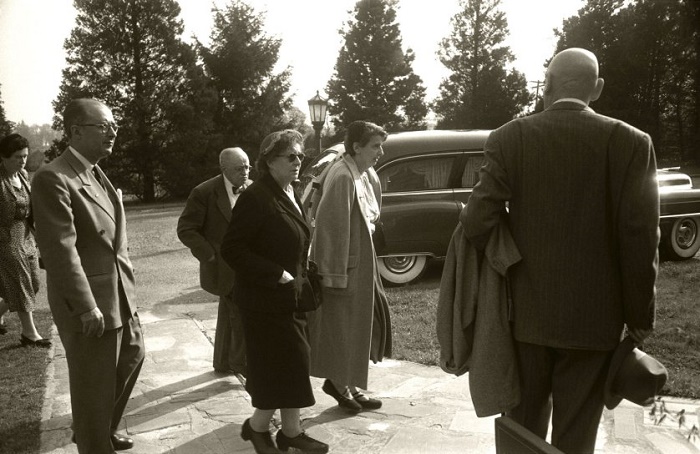
Finally: The stranger-than-fiction tale of Einstein’s brain — which Dr. Thomas Harvey controversially removed during the autopsy, carefully sliced into sections, and then kept for years for research purposes — and the intrigues long-associated with the famous organ are too convoluted to go into here. However, on the day that Einstein died, Ralph Morse was able to take a few quick photographs of Dr. Harvey at the hospital. Morse says he’s certain that is not Einstein’s brain under Dr. Harvey’s knife in the picture that ends the gallery above,
Then, after a pause, Morse says: “You know, it was a long, long time ago. I don’t remember every detail. So, whatever he’s cutting there. . . .” His words hang in the air.
Then, mischievously, Morse laughs.
Ben Cosgrove is the Editor of LIFE.com
